As a full service custom battery pack manufacturer, we prioritize providing our customers with the highest quality battery pack assembly while keeping you under budget. Many of the battery packs manufactured by Epec go into mission critical devices, which require nothing short of the highest quality, rugged and reliable batteries. In this post we will look at three key aspects of Epec's US manufacturing that enable us to meet and exceed our goals.
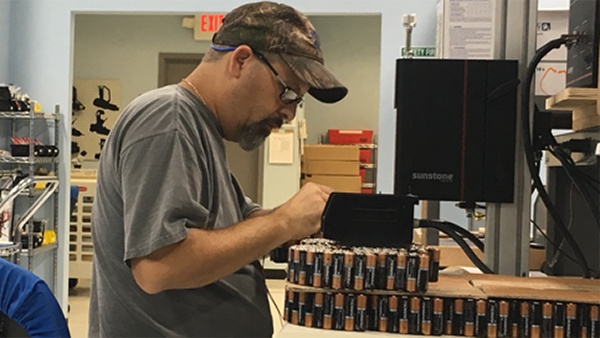
Battery assembly and testing
Skills
We staff our battery assembly team with certified IPC J-STD-100 solderers. We have an IPC trainer on staff, which enables Epec to train according to our staffing cycles and production demands. Also, Epec trains our production and inspection staff to these other pertinent to IPC standards:
IPC-A-600 Acceptability of Printed Boards
This is the industry standard which defines acceptance criteria for acceptable and nonconforming conditions on bare printed circuit boards (PCBs). PCB manufacturers and assemblers alike rely on standard to understand and communicate board quality issues with their suppliers and customers.
IPC-A-610 Acceptability of Electronic Assemblies
Similar to IPC-600, this is the standard for printed circuit board assemblies (PCBAs).
IPC/WHMA-A-620 Standard Requirements and Acceptance of Cable and Wire Harness Assemblies
This is the industry standard which defines visual Quality Acceptability Requirements for various types of cables.
Visual Cues
When you visit Epec, we want you to be impressed with our strong commitment to the visual workplace. We fill our production area and warehouse with words and graphic reminders that help operators perform mistake-free work, including signage, color-coding, floor tape, shadow boards and more. An audit of our production work cells will show a comprehensive set of work instructions and job travelers for each product. All of our work instructions are made easily available to the production operator at each work cell.
Taking a closer look at our work instructions shows how we consistently review and refine our production process in pursuit of perfection. Any ways we can cut waste and uncertainty to develop better, quicker, more reliable methods of assembly and testing are put into practice to optimize your product and cost.
Many procedures utilize pictures as means of supplementing the written assembly instructions; below is an example from diode harness assembly:
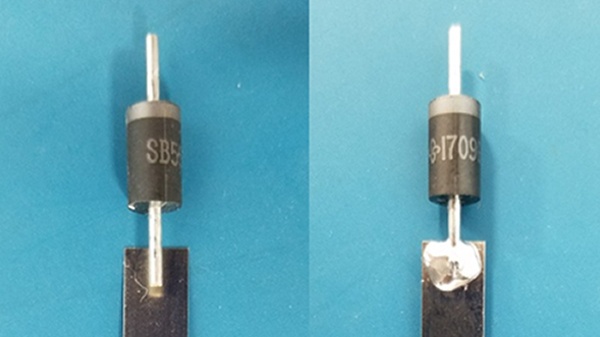
Diode Harness Assembly Process
The image above from our work instructions echoes the accompanying written instruction of placing the diode with the “gray striped end facing away from the nickel tab."
A few steps later in the work instruction, we direct the assembler to “ensure diode orientation matches the white silkscreen at the center of the fixture” before soldering to the nickel tab common bus. See below:
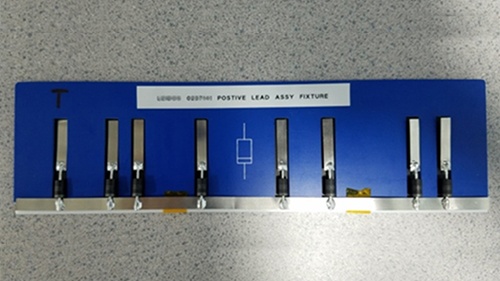
Diode Harness Assembly Fixture
Once the sub-assembly is complete, the work instruction directs the operator to ensure proper diode polarity with a continuity tester.
Electrical Tests
Epec applies a good deal of attention to all critical aspects of your battery product. We perform test and inspection at all key points in the production process, assuring a good product ready for the next level of build. When we encounter production errors, we rework and inspect production fallout before releasing reworked product back into our production process.
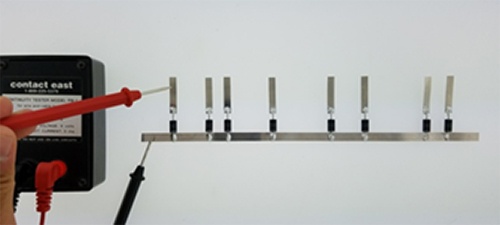
Continuity Check for Diode Harness Assembly
Typical inspection points for battery product work in process are:
- Cell Polarity
- Weld Validation
- Battery String Voltage Test Under Load
- Continuity Test
- Diode Polarity
To meet the voltage and power capacity requirements of the application, many battery pack designs require a series-parallel combination of cells. As part of the assembly process, we perform load testing on each parallel string of cells in the battery pack before final assembly. Load testing is valuable because tests under load help precipitate failures that do not show themselves at open circuit voltage testing. Once we assemble the entire battery pack circuit, we perform another load test to ensure that we assembled all of the parallel battery elements correctly and the product is ready for final assembly.
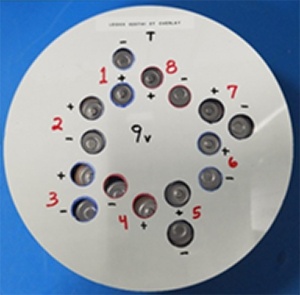
Overlay Used For Testing Parallel Circuit Elements
After final assembly, we perform a load test to ensure that the battery pack is working properly. The below table shows the pass/fail criteria and failure diagnosis for one particular battery pack part number.
| Load Test (i=3A, t=1s) | |
|---|---|
| Voltage Drop | Product Status |
| < 1.5V | 100% pass (3/3) |
| >4.0V | 1 diode reversed (2/3) |
| >7.0V | 2 diodes reversed (1/3) |
Analysis of Load Testing Product Failures
Summary
If you have demanding production requirements for your battery pack assembly, Epec has the skills and experience to manufacture the rugged, reliable, and quality products you need. It is embedded within our talented and dedicated workforce, our processes, our core values. We manufacture quality into every product to become the battery pack manufacturer you can rely on, every time.
Key Takeaways
- Certified Expertise: Epec’s battery assembly team includes certified IPC J-STD-100 solderers and an in-house IPC trainer, ensuring consistent, high-quality workmanship that meets strict industry standards.
- Commitment to Visual Excellence: The production floor features visual management tools like signage, color-coding, and detailed work instructions that support mistake-free manufacturing and efficiency.
- Process Optimization: Continuous refinement of assembly methods and visual documentation allows Epec to reduce waste, eliminate uncertainty, and improve cost-effectiveness without compromising quality.
- Rigorous Electrical Testing: Multiple inspection points, including cell polarity, weld validation, and load testing, verify the integrity of each battery pack through every production stage.
- Reliability Through Verification: Comprehensive testing under load conditions ensures every assembled battery pack meets voltage, capacity, and polarity requirements before final shipment.
















